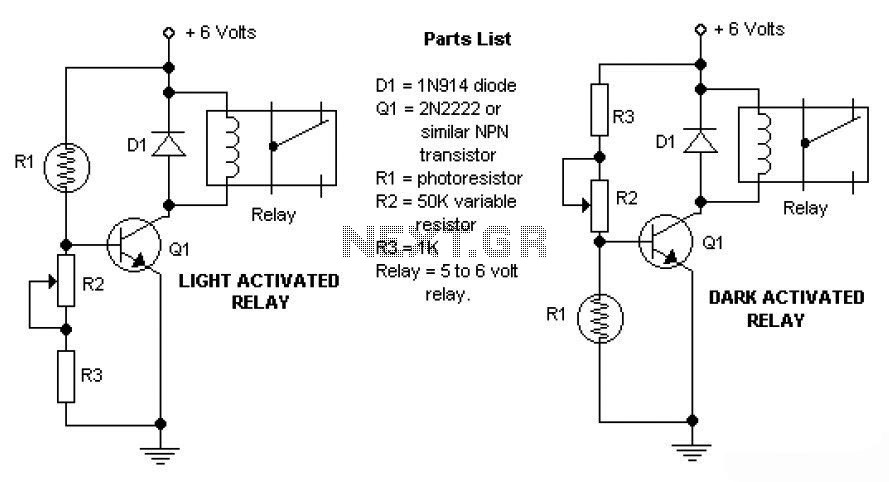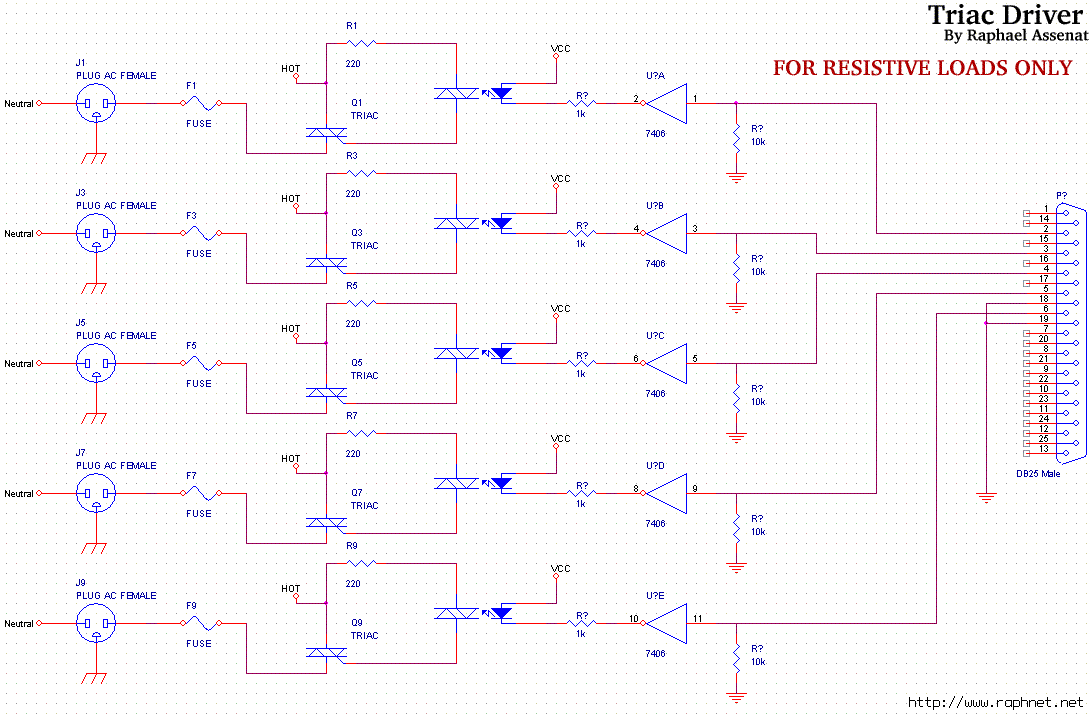
Dark and Light Activated Relay

This is a basic dark and light sensor that uses a photoresistor as the sensing component. The transistor functions as a switch; when the switch is in the "on" condition, the relay will be activated. The potentiometer adjusts the trigger-on level.
The described circuit operates as a simple light detection system, utilizing a photoresistor (LDR) to sense ambient light levels. The photoresistor's resistance decreases with increasing light intensity, allowing it to function effectively as a variable resistor in the circuit.
In this configuration, the photoresistor is connected in a voltage divider arrangement with a fixed resistor. This setup produces a voltage output that varies based on the light level detected by the photoresistor. The output voltage is fed into the base of a transistor, which acts as a switch.
When the light level falls below a predetermined threshold, the voltage at the base of the transistor exceeds the base-emitter threshold voltage, turning the transistor on. This action allows current to flow from the collector to the emitter, thereby activating the relay. The relay, once energized, can control a larger load or device, such as a light or alarm system, making it suitable for applications in automatic lighting control or security systems.
The potentiometer in the circuit provides a means to fine-tune the sensitivity of the light detection. By adjusting the potentiometer, the user can set the specific light level at which the relay will activate, allowing for customization based on the environment in which the sensor is deployed.
Overall, this basic dark and light sensor circuit is an effective solution for applications requiring automatic responses to changes in ambient light conditions.This is the basic dark and light sensor which using photoresistor as sensing component. The transistor act like as a switch, when the switch in on condition then the relay will be activated. The potensiometer adjust the trigger on level. Th.. 🔗 External reference
The described circuit operates as a simple light detection system, utilizing a photoresistor (LDR) to sense ambient light levels. The photoresistor's resistance decreases with increasing light intensity, allowing it to function effectively as a variable resistor in the circuit.
In this configuration, the photoresistor is connected in a voltage divider arrangement with a fixed resistor. This setup produces a voltage output that varies based on the light level detected by the photoresistor. The output voltage is fed into the base of a transistor, which acts as a switch.
When the light level falls below a predetermined threshold, the voltage at the base of the transistor exceeds the base-emitter threshold voltage, turning the transistor on. This action allows current to flow from the collector to the emitter, thereby activating the relay. The relay, once energized, can control a larger load or device, such as a light or alarm system, making it suitable for applications in automatic lighting control or security systems.
The potentiometer in the circuit provides a means to fine-tune the sensitivity of the light detection. By adjusting the potentiometer, the user can set the specific light level at which the relay will activate, allowing for customization based on the environment in which the sensor is deployed.
Overall, this basic dark and light sensor circuit is an effective solution for applications requiring automatic responses to changes in ambient light conditions.This is the basic dark and light sensor which using photoresistor as sensing component. The transistor act like as a switch, when the switch in on condition then the relay will be activated. The potensiometer adjust the trigger on level. Th.. 🔗 External reference





